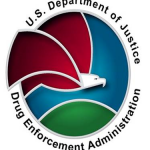2022 edition of Drugs of Abuse, A DEA Resource Guide.
The Drugs of Abuse guide is released on a periodic basis and designed to be a reliable resource on the most commonly abused and misused drugs in the United States. The guide provides important science-based information about the harms and consequences of drug use, describing a drug’s effects on the body and mind, overdose potential, origin, legal status, and other key factors.
To view the 2022 Drugs of Abuse resource guide, visit
DEA Resource Guide
The U.S. Drug Enforcement Administration just shared the document below with members of the US House of Representatives Energy & Commerce Committee who had asked for more info on opioids, heroin, and fentanyl.
Please click on the link below to review the report.
Opioid Epidemic Overview and Resources
The Drug Enforcement Administration (DEA) Community Outreach Section is pleased to announce the release of an updated version of Growing Up Drug Free: A Parent’s Guide to Prevention. DEA partnered with the U.S. Department of Education to update this publication that was last revised in 2012. This 40-page booklet offers information to help parents and other caregivers raise drug-free children. The guide includes an overview of substance use among youth; descriptions of substances young people may use; a look at risk factors that may make kids more vulnerable to trying and using drugs, and protective factors to offset those risks; suggestions for how to talk to children about drugs, regardless of their age; and tips on what to do if you suspect your child is using alcohol, tobacco, or other drugs.
Please click the link below for the full report:
Growing Up Drug Free: A Parent’s Guide to Prevention
The DEA is especially concerned about marijuana use and its negative consequences among youth and young adults. This publication provides an overview of the prevalence of marijuana use among this population; the physical, academic, and social consequences; tips for how to get involved to prevent marijuana use among youth and young adults; and federal resources to assist in your efforts.
Please click the link below for the full report:
